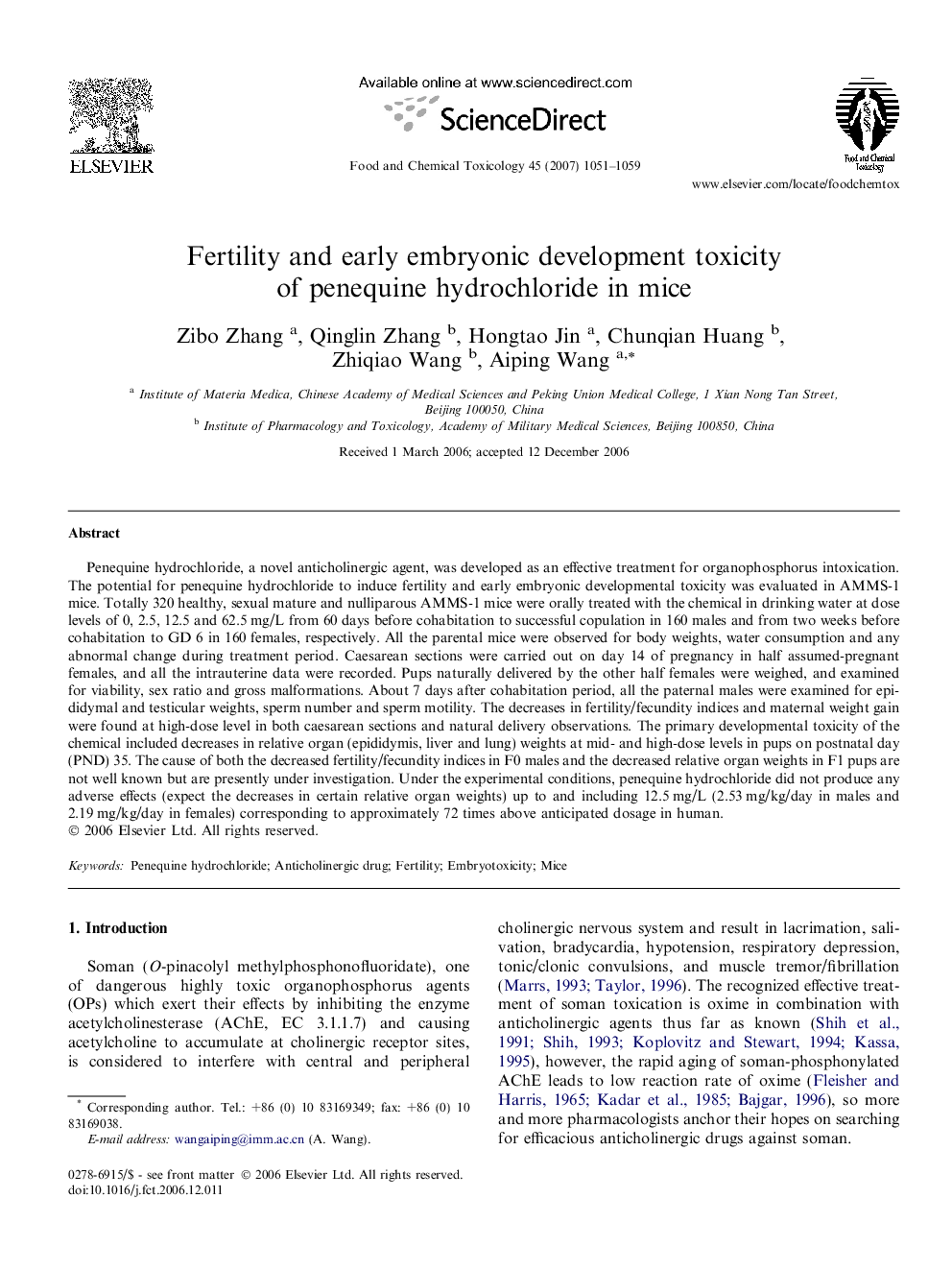| کد مقاله | کد نشریه | سال انتشار | مقاله انگلیسی | نسخه تمام متن |
|---|---|---|---|---|
| 2588269 | 1130959 | 2007 | 9 صفحه PDF | دانلود رایگان |

Penequine hydrochloride, a novel anticholinergic agent, was developed as an effective treatment for organophosphorus intoxication. The potential for penequine hydrochloride to induce fertility and early embryonic developmental toxicity was evaluated in AMMS-1 mice. Totally 320 healthy, sexual mature and nulliparous AMMS-1 mice were orally treated with the chemical in drinking water at dose levels of 0, 2.5, 12.5 and 62.5 mg/L from 60 days before cohabitation to successful copulation in 160 males and from two weeks before cohabitation to GD 6 in 160 females, respectively. All the parental mice were observed for body weights, water consumption and any abnormal change during treatment period. Caesarean sections were carried out on day 14 of pregnancy in half assumed-pregnant females, and all the intrauterine data were recorded. Pups naturally delivered by the other half females were weighed, and examined for viability, sex ratio and gross malformations. About 7 days after cohabitation period, all the paternal males were examined for epididymal and testicular weights, sperm number and sperm motility. The decreases in fertility/fecundity indices and maternal weight gain were found at high-dose level in both caesarean sections and natural delivery observations. The primary developmental toxicity of the chemical included decreases in relative organ (epididymis, liver and lung) weights at mid- and high-dose levels in pups on postnatal day (PND) 35. The cause of both the decreased fertility/fecundity indices in F0 males and the decreased relative organ weights in F1 pups are not well known but are presently under investigation. Under the experimental conditions, penequine hydrochloride did not produce any adverse effects (expect the decreases in certain relative organ weights) up to and including 12.5 mg/L (2.53 mg/kg/day in males and 2.19 mg/kg/day in females) corresponding to approximately 72 times above anticipated dosage in human.
Journal: Food and Chemical Toxicology - Volume 45, Issue 6, June 2007, Pages 1051–1059